Kevin Kilgour
Text-Driven Separation of Arbitrary Sounds
Apr 12, 2022

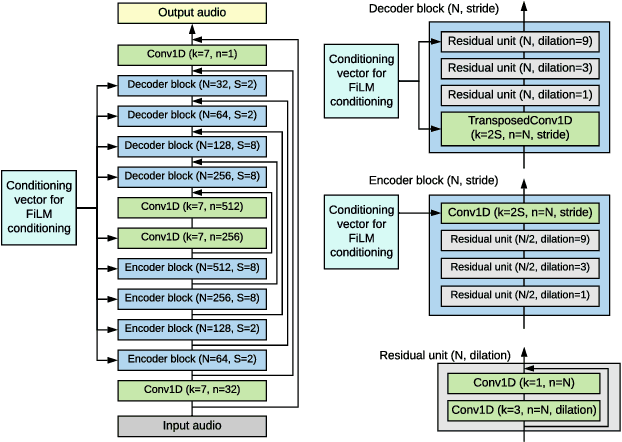

Abstract:We propose a method of separating a desired sound source from a single-channel mixture, based on either a textual description or a short audio sample of the target source. This is achieved by combining two distinct models. The first model, SoundWords, is trained to jointly embed both an audio clip and its textual description to the same embedding in a shared representation. The second model, SoundFilter, takes a mixed source audio clip as an input and separates it based on a conditioning vector from the shared text-audio representation defined by SoundWords, making the model agnostic to the conditioning modality. Evaluating on multiple datasets, we show that our approach can achieve an SI-SDR of 9.1 dB for mixtures of two arbitrary sounds when conditioned on text and 10.1 dB when conditioned on audio. We also show that SoundWords is effective at learning co-embeddings and that our multi-modal training approach improves the performance of SoundFilter.
Teaching keyword spotters to spot new keywords with limited examples
Jun 04, 2021



Abstract:Learning to recognize new keywords with just a few examples is essential for personalizing keyword spotting (KWS) models to a user's choice of keywords. However, modern KWS models are typically trained on large datasets and restricted to a small vocabulary of keywords, limiting their transferability to a broad range of unseen keywords. Towards easily customizable KWS models, we present KeySEM (Keyword Speech EMbedding), a speech embedding model pre-trained on the task of recognizing a large number of keywords. Speech representations offered by KeySEM are highly effective for learning new keywords from a limited number of examples. Comparisons with a diverse range of related work across several datasets show that our method achieves consistently superior performance with fewer training examples. Although KeySEM was pre-trained only on English utterances, the performance gains also extend to datasets from four other languages indicating that KeySEM learns useful representations well aligned with the task of keyword spotting. Finally, we demonstrate KeySEM's ability to learn new keywords sequentially without requiring to re-train on previously learned keywords. Our experimental observations suggest that KeySEM is well suited to on-device environments where post-deployment learning and ease of customization are often desirable.
Low Latency ASR for Simultaneous Speech Translation
Mar 22, 2020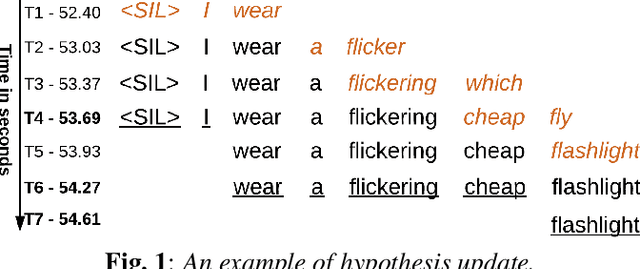
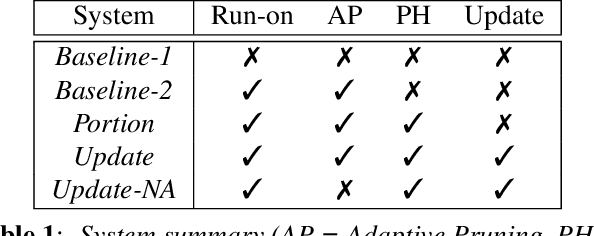
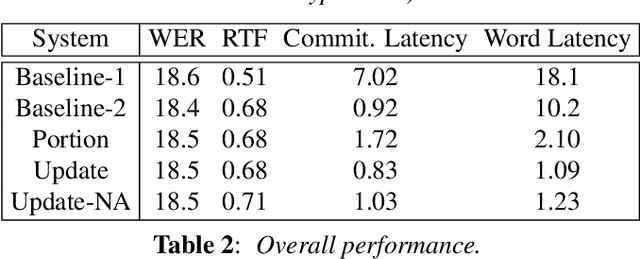
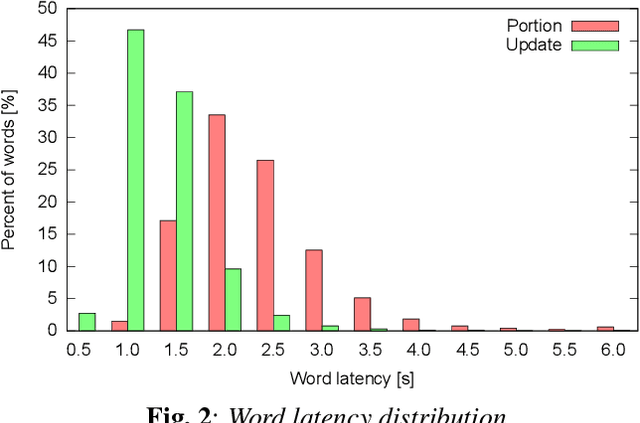
Abstract:User studies have shown that reducing the latency of our simultaneous lecture translation system should be the most important goal. We therefore have worked on several techniques for reducing the latency for both components, the automatic speech recognition and the speech translation module. Since the commonly used commitment latency is not appropriate in our case of continuous stream decoding, we focused on word latency. We used it to analyze the performance of our current system and to identify opportunities for improvements. In order to minimize the latency we combined run-on decoding with a technique for identifying stable partial hypotheses when stream decoding and a protocol for dynamic output update that allows to revise the most recent parts of the transcription. This combination reduces the latency at word level, where the words are final and will never be updated again in the future, from 18.1s to 1.1s without sacrificing performance in terms of word error rate.
Training Keyword Spotters with Limited and Synthesized Speech Data
Jan 31, 2020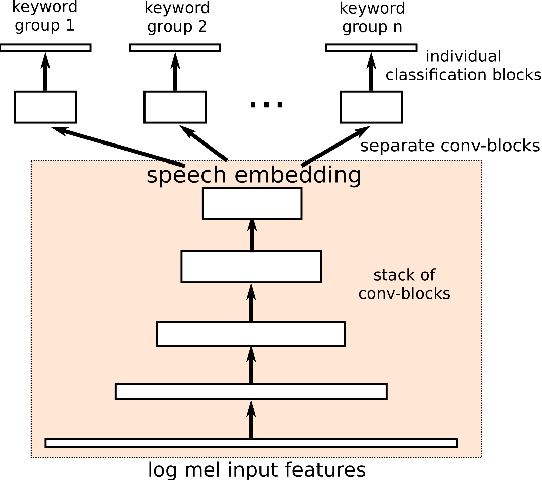

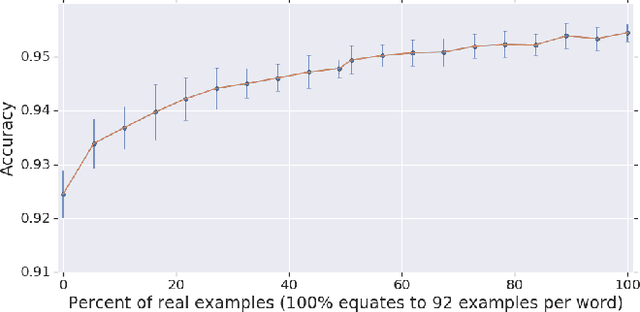
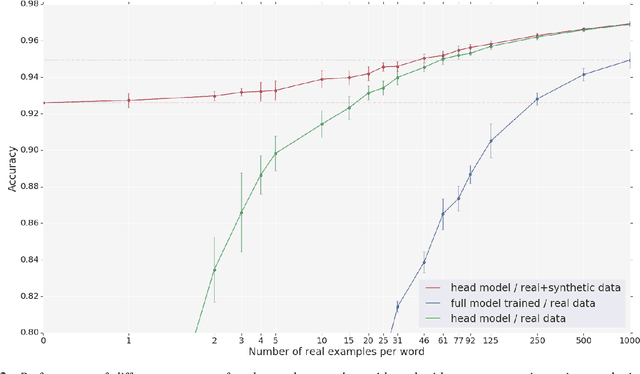
Abstract:With the rise of low power speech-enabled devices, there is a growing demand to quickly produce models for recognizing arbitrary sets of keywords. As with many machine learning tasks, one of the most challenging parts in the model creation process is obtaining a sufficient amount of training data. In this paper, we explore the effectiveness of synthesized speech data in training small, spoken term detection models of around 400k parameters. Instead of training such models directly on the audio or low level features such as MFCCs, we use a pre-trained speech embedding model trained to extract useful features for keyword spotting models. Using this speech embedding, we show that a model which detects 10 keywords when trained on only synthetic speech is equivalent to a model trained on over 500 real examples. We also show that a model without our speech embeddings would need to be trained on over 4000 real examples to reach the same accuracy.
Low-Dimensional Bottleneck Features for On-Device Continuous Speech Recognition
Oct 31, 2018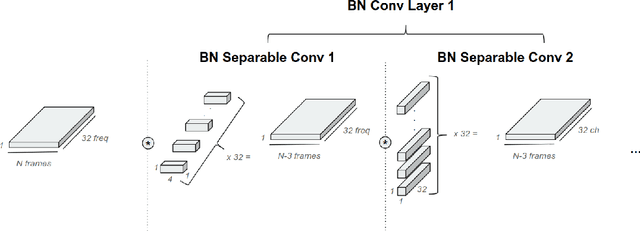

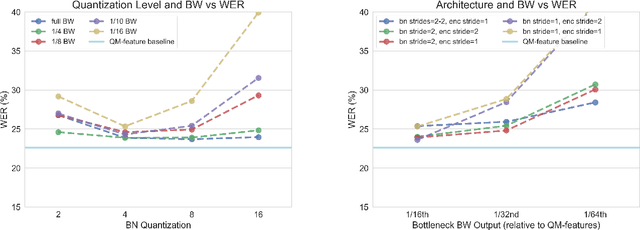

Abstract:Low power digital signal processors (DSPs) typically have a very limited amount of memory in which to cache data. In this paper we develop efficient bottleneck feature (BNF) extractors that can be run on a DSP, and retrain a baseline large-vocabulary continuous speech recognition (LVCSR) system to use these BNFs with only a minimal loss of accuracy. The small BNFs allow the DSP chip to cache more audio features while the main application processor is suspended, thereby reducing the overall battery usage. Our presented system is able to reduce the footprint of standard, fixed point DSP spectral features by a factor of 10 without any loss in word error rate (WER) and by a factor of 64 with only a 5.8% relative increase in WER.
Now Playing: Continuous low-power music recognition
Nov 29, 2017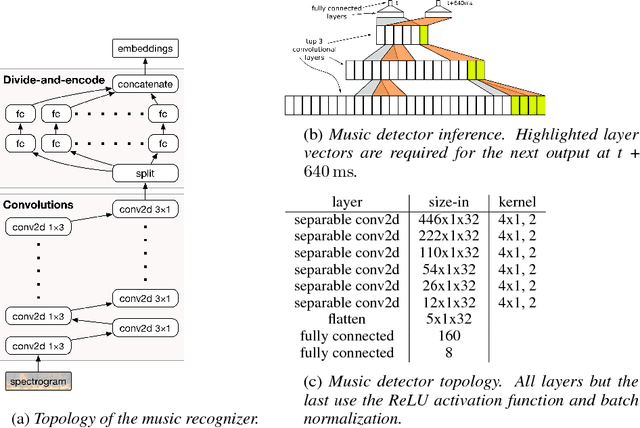
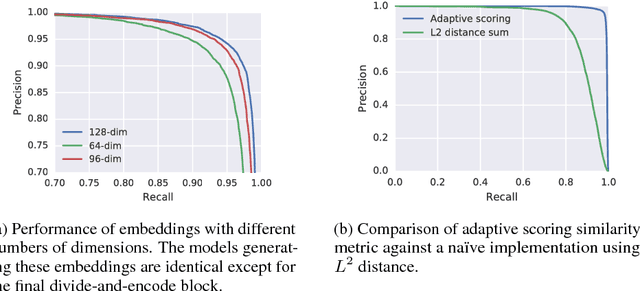
Abstract:Existing music recognition applications require a connection to a server that performs the actual recognition. In this paper we present a low-power music recognizer that runs entirely on a mobile device and automatically recognizes music without user interaction. To reduce battery consumption, a small music detector runs continuously on the mobile device's DSP chip and wakes up the main application processor only when it is confident that music is present. Once woken, the recognizer on the application processor is provided with a few seconds of audio which is fingerprinted and compared to the stored fingerprints in the on-device fingerprint database of tens of thousands of songs. Our presented system, Now Playing, has a daily battery usage of less than 1% on average, respects user privacy by running entirely on-device and can passively recognize a wide range of music.
 Add to Chrome
Add to Chrome Add to Firefox
Add to Firefox Add to Edge
Add to Edge